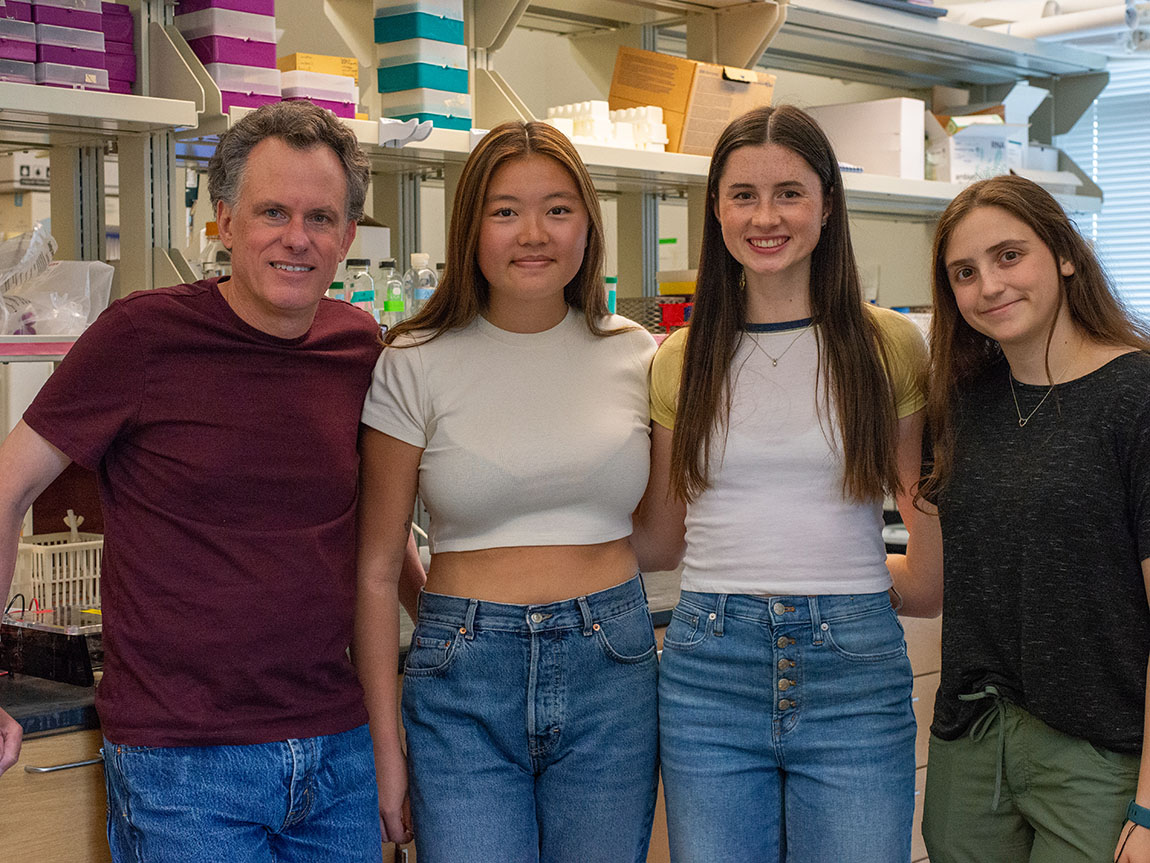Professor of Biology’s Paper Cited as a Key Publication in Awarding of Nobel Prize
A 1993 paper Bruce Wightman co-authored laid groundwork for the research that earned Gary Ruvkun and Victor Ambros the 2024 Nobel Prize in Physiology or Medicine. Wightman was interviewed for a “Scientific American” story about the work.By: Meghan Kita Tuesday, October 8, 2024 08:41 AM
 Wightman (left) with student researchers Ashley Kim ’25, Erin Jackson ’25, and Vivi Arking ’25 in his lab in summer 2023
Wightman (left) with student researchers Ashley Kim ’25, Erin Jackson ’25, and Vivi Arking ’25 in his lab in summer 2023As a graduate student, Professor of Biology Bruce Wightman co-authored the paper “Posttranscriptional regulation of the heterochronic gene lin-14 by lin-4 mediates temporal pattern formation in C. elegans,” which was published in the journal Cell in 1993.
That paper was cited as a key publication in a press release announcing the 2024 Nobel Prize in Physiology or Medicine.
Scientific American interviewed Wightman for a story about the prize:
The groundwork for the discovery of microRNA was laid more than a decade before, in the early 1980s, says Bruce Wightman, a professor and chair of biology at Muhlenberg College. Wightman was a graduate student at Ruvkun’s lab at Harvard and co-authored one of the studies underlying that discovery. And when he and his colleagues described that study’s findings in 1993, their significance wasn’t immediately apparent. “There were some people who really thought that that was really interesting and were really excited about it,” he says. “But there were a lot of people who thought it was just some weird worm thing and wasn't going to lead to anything broader.” Later it became clear that microRNAs were conserved by evolution in most of the animal kingdom and that some of those in humans play a critical role in cancer and other diseases.
Wightman continues to research C. elegans, which are microscopic worms, alongside Muhlenberg student researchers in his lab on campus.

